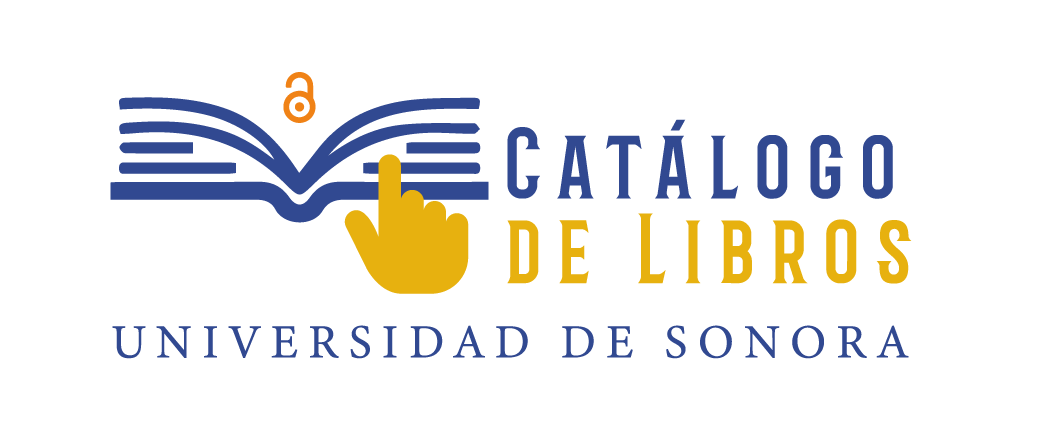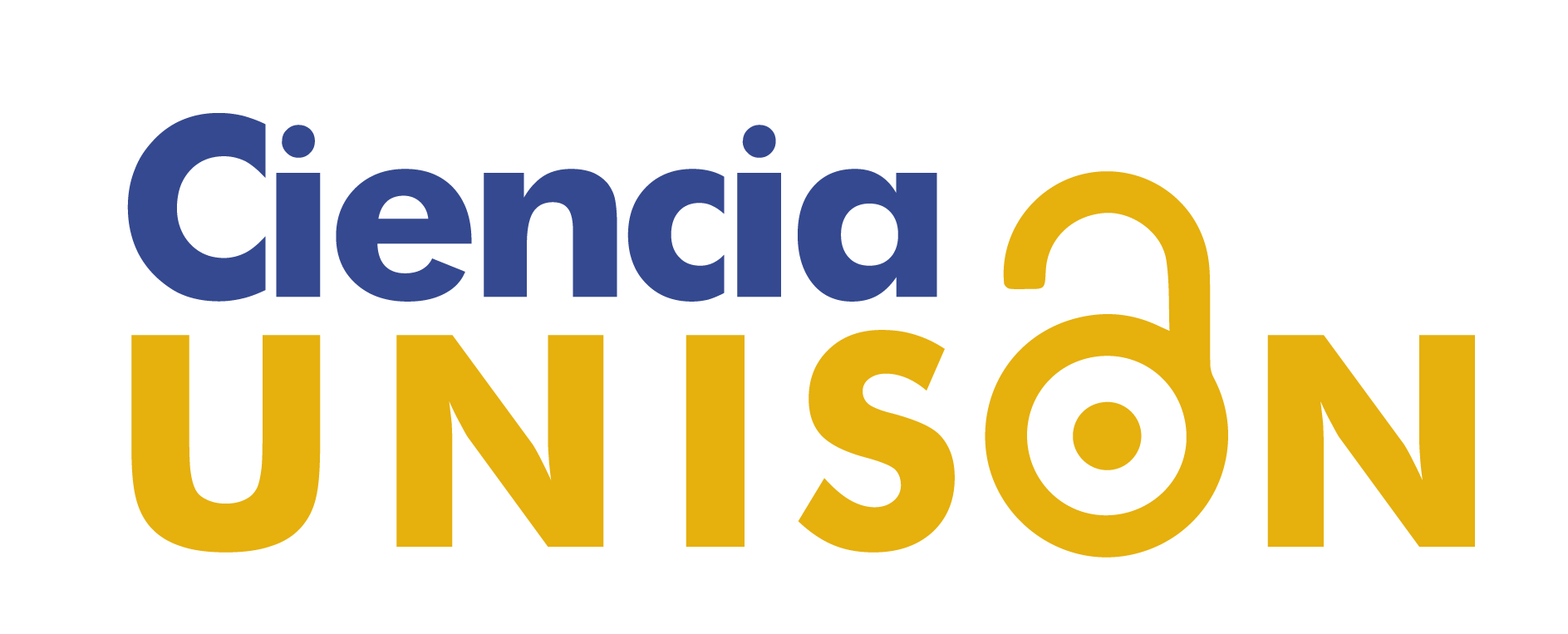Effect of extraction conditions on total phenolic content and antioxidant capacity of bagasse Mexican oregano
DOI:
https://doi.org/10.18633/biotecnia.v27.2494Keywords:
agroindustrial waste, oregano bagasse, bioactive compounds, sustainability, valorizationAbstract
Mexican oregano (Lippia graveolens Kunth) is one of the most important species worldwide due to its human health benefit properties and high economic value. Oregano leaves are primarily used for essential oil extraction, generating substantial agro-industrial waste known as bagasse (OB). It has been reported that OB still contains several bioactive compounds with high antioxidant activity. This study aimed to evaluate the extraction conditions to recover phenolic compounds and assess their antioxidant capacity in OB extracts obtained through ultrasound. A 3k Box-Behnken design was employed to explore the effects of temperature, mass/volume ratio, and [EtOH]. Total phenolic content and antioxidant capacity against DPPH· and ABTS·+ radicals were determined. The increase in temperature and m/v ratio promoted the extraction of phenolic compounds, with strong correlations to antioxidant activity by DPPH· (0.81) and ABTS·+ (0.82) assays. A quadratic effect by [EtOH] was observed, with a maximum value of 50% ethanol. The highest value of total phenolic content (35.66 mgGAE/gdm), and antioxidant capacity against DPPH· (100.94 mgTE/gdm) and ABTS (93.02 mgTE/gdm) radicals were achieved in treatment 13 (0.02 mg/mL, 50% EtOH, and 90°C). The OB is a potential source of bioactive compounds with potential applications in functional food development.
Downloads
References
Alagawany, M., Elgammal, M., Farag, M., Tiwari, R. & Dhama, K. 2015. Biological Effects and Modes of Action of Carvacrol in Animal and Poultry Production and Health - A Review. Advances in Animal and Veterinary Sciences, 3, 73-84.
Becerril-Sánchez, A. L., Quintero-Salazar, B., Dublán-García, O. & Escalona-Buendía, H. B. 2021. Phenolic Compounds in Honey and Their Relationship with Antioxidant Activity, Botanical Origin, and Color. Antioxidants, 10 (11), 1700.
Brahmi, F., Blando, F., Sellami, R., Mehdi, S., De Bellis, L., Negro, C., Haddadi-Guemghar, H., Madani, K. & Makhlouf-Boulekbache, L. 2022. Optimization of the conditions for ultrasound-assisted extraction of phenolic compounds from Opuntia ficus-indica [L.] Mill. flowers and comparison with conventional procedures. Industrial Crops and Products, 184, 114977.
Calvo-Irabien, L. M. 2018. Native Mexican aromatic flora and essential oils: Current research status, gaps in knowledge and agro-industrial potential. Industrial Crops and Products, 111, 807-822.
Chávez-González, M. L., Sepúlveda, L., Verma, D. K., Luna-García, H. A., Rodríguez-Durán, L. V., Ilina, A. & Aguilar, C. N. 2020. Conventional and Emerging Extraction Processes of Flavonoids. Processes, 8 (4), 434.
Cid-Pérez, T., Avila-Sosa, R., Ochoa Velasco, C. E., Rivera-Chavira, B. & Nevarez-Moorillon, G. 2019. Antioxidant and Antimicrobial Activity of Mexican Oregano (Poliomintha longiflora) Essential Oil, Hydrosol and Extracts from Waste Solid Residues. Plants, 8, 22.
Ćujić, N., Šavikin, K., Janković, T., Pljevljakušić, D., Zdunić, G. & Ibrić, S. 2016. Optimization of polyphenols extraction from dried chokeberry using maceration as traditional technique. Food Chemistry, 194, 135-142.
Drevelegka, I. & Goula, A. M. 2020. Recovery of grape pomace phenolic compounds through optimized extraction and adsorption processes. Chemical Engineering and Processing - Process Intensification, 149, 107845.
Du, G., Ma, Y., Song, J., Li, L., Niu, Z., Wu, S. & Lv, Y. 2018. Applications of pinocembrin in preparing anti-cerebral hemorrage medicament. China patent application WO/2018/090358.
Ferreira, B. L., Junior, T. K., Block, J. M., Granato, D. & Nunes, I. L. 2021. Innovative approach for obtaining phenolic compounds from guava (Psidium guajava L.) coproduct using ionic liquid ultrasound-assisted extraction (IL-UAE). Biocatalysis and Agricultural Biotechnology, 38, 102196.
Frías-Zepeda, M. E. & Rosales-Castro, M. 2021. Efecto de las condiciones de extracción sobre la concentración de compuestos fenólicos en residuos de orégano mexicano (Lippia graveolens Kunth). Revista Chapingo Serie Ciencias Forestales y del Ambiente, 27, 367–381.
González-Trujano, M. E., Hernández-Sánchez, L. Y., Muñoz Ocotero, V., Dorazco-González, A., Guevara Fefer, P. & Aguirre-Hernández, E. 2017. Pharmacological evaluation of the anxiolytic-like effects of Lippia graveolens and bioactive compounds. Pharmaceutical Biology, 55, 1569-1576.
Goula, A. M., Ververi, M., Adamopoulou, A. & Kaderides, K. 2017. Green ultrasound-assisted extraction of carotenoids from pomegranate wastes using vegetable oils. Ultrasonics Sonochemistry, 34, 821-830.
Gutiérrez-Grijalva, E. P., Angulo-Escalante, M. A., León-Félix, J. & Heredia, J. B. 2017. Effect of In Vitro Digestion on the Total Antioxidant Capacity and Phenolic Content of 3 Species of Oregano (Hedeoma patens, Lippia graveolens, Lippia palmeri). Journal of Food Science, 82, 2832-2839.
Lim, Y. P., Pang, S. F., Yusoff, M. M., Abdul Mudalip, S. K. & Gimbun, J. 2019. Correlation between the extraction yield of mangiferin to the antioxidant activity, total phenolic and total flavonoid content of Phaleria macrocarpa fruits. Journal of Applied Research on Medicinal and Aromatic Plants, 14, 100224.
Lin, L. Z., Mukhopadhyay, S., Robbins, R. J. & Harnly, J. M. 2007. Identification and quantification of flavonoids of Mexican oregano (Lippia graveolens) by LC-DAD-ESI/MS analysis. Journal of Food Composition and Analysis, 20, 361-369.
López-Cárdenas, F., Ochoa-Reyes, E., Baeza-Jiménez, R., Tafolla-Arellano, J. C., Ascacio-Valdés, J. A. & Buenrostro-Figueroa, J. J. 2023. Solid-State Fermentation as a Sustainable Tool for Extracting Phenolic Compounds from Cascalote Pods. Fermentation, 9, 823.
Machado, A. P. D. F., Pasquel-Reátegui, J. L., Barbero, G. F. & Martínez, J. 2015. Pressurized liquid extraction of bioactive compounds from blackberry (Rubus fruticosus L.) residues: a comparison with conventional methods. Food Research International, 77, 675-683.
Martínez-Natarén, D., Parra-Tabla, V., Dzib, G., Acosta-Arriola, V., Canul-Puc, K. & Calvo-Irabién, L. 2013. Essential oil Yield Variation Within and Among Wild Populations of Mexican Oregano (Lippia graveolens H.B.K.-Verbenaceae), and its Relation to Climatic and Edaphic Conditions. Journal of Essential Oil Bearing Plants, 15, 589-601.
Meléndez, N. P., Nevrez-Moorillón, V., Rodríguez-Herrera, R., Espinoza José, C. & Aguilar, C. N. 2014. A microassay for quantification of 2,2-diphenyl-1-picrylhydracyl (DPPH) free radical scavenging. African Journal of Biochemistry Research, 8, 14-18.
Muzolf-Panek, M. & Stuper-Szablewska, K. 2021. Comprehensive study on the antioxidant capacity and phenolic profiles of black seed and other spices and herbs: effect of solvent and time of extraction. Journal of Food Measurement and Characterization, 15, 4561-4574.
Orona Castillo, I., Salvador Almazán, A. J., Espinoza Arellano, J. D. J. & Vázquez, C. 2017. Recolección y comercialización del orégano (Lippia spp) en el semidesierto mexicano, un caso de estudio: Reserva ecológica municipal Sierra y Cañon de Jimulco, México. Revista Mexicana de Agronegocios, 41, 684-695.
Osorio-Tobón, J. F. 2020. Recent advances and comparisons of conventional and alternative extraction techniques of phenolic compounds. Journal of Food Science and Technology, 57, 4299-4315.
Pandey, A., Belwal, T., Sekar, K. C., Bhatt, I. D. & Rawal, R. S. 2018. Optimization of ultrasonic-assisted extraction (UAE) of phenolics and antioxidant compounds from rhizomes of Rheum moorcroftianum using response surface methodology (RSM). Industrial Crops and Products, 119, 218-225.
Putra, V. G. P., Mutiarahma, S., Chaniago, W., Rahmadi, P., Kurnianto, D., Hidayat, C., Carrera, C., Palma, M. & Setyaningsih, W. 2022. An ultrasound-based technique for the analytical extraction of phenolic compounds in red algae. Arabian Journal of Chemistry, 15, 103597.
Reyes-Jurado, F., Cervantes-Rincón, T., Bach, H., López-Malo, A. & Palou, E. 2019. Antimicrobial activity of Mexican oregano (Lippia berlandieri), thyme (Thymus vulgaris), and mustard (Brassica nigra) essential oils in gaseous phase. Industrial Crops and Products, 131, 90-95.
Romero-Díez, R., Rodríguez-Rojo, S., Cocero, M. J., Duarte, C. M. M., Matias, A. A. & Bronze, M. R. 2018. Phenolic characterization of aging wine lees: Correlation with antioxidant activities. Food Chemistry, 259, 188-195.
Shehata, M. G., Abd El Aziz, N. M., Youssef, M. M. & El-Sohaimy, S. A. 2021. Optimization conditions of ultrasound-assisted extraction of phenolic compounds from orange peels using response surface methodology. Journal of Food Processing and Preservation, 45, e15870.
Solomakou, N., Loukri, A., Tsafrakidou, P., Michaelidou, A.-M., Mourtzinos, I. & Goula, A. M. 2022. Recovery of phenolic compounds from spent coffee grounds through optimized extraction processes. Sustainable Chemistry and Pharmacy, 25, 100592.
Stashenko, E., Duran García, D. C., Martinez Morales, J. R., Cordoba Campo, Y., Arias Velandia, A. J., Mejia Medina, J. J. & Tavera Reyes, C. A. 2018. Method for making full use of Lippia Origanoides. Colombia patent application 16/474,470.
Uysal, S., Cvetanović, A., Zengin, G., Zeković, Z., Mahomoodally, M. F. & Bera, O. 2019. Optimization of Maceration Conditions for Improving the Extraction of Phenolic Compounds and Antioxidant Effects of Momordica charantia L. Leaves Through Response Surface Methodology (RSM) and Artificial Neural Networks (ANNs). Analytical Letters, 52, 2150-2163.
Wojeicchowski, J. P., Marques, C., Igarashi-Mafra, L., Coutinho, J. a. P. & Mafra, M. R. 2021. Extraction of phenolic compounds from rosemary using choline chloride – based Deep Eutectic Solvents. Separation and Purification Technology, 258, 117975.
Wong-Paz, J. E., Contreras-Esquivel, J. C., Rodríguez-Herrera, R., Carrillo-Inungaray, M. L., López, L. I., Nevárez-Moorillón, G. V. & Aguilar, C. N. 2015. Total phenolic content, in vitro antioxidant activity and chemical composition of plant extracts from semiarid Mexican region. Asian Pacific Journal of Tropical Medicine, 8, 104-111.
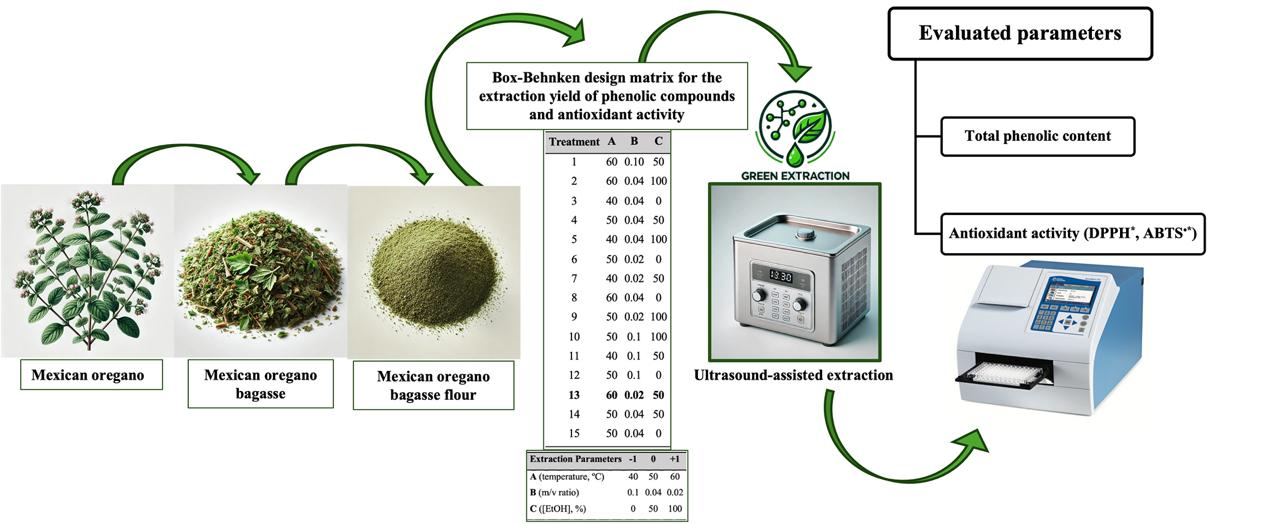
Downloads
Published
How to Cite
Issue
Section
License
Copyright (c) 2025

This work is licensed under a Creative Commons Attribution-NonCommercial-ShareAlike 4.0 International License.
The journal Biotecnia is licensed under the Attribution-NonCommercial-ShareAlike 4.0 International (CC BY-NC-SA 4.0) license.




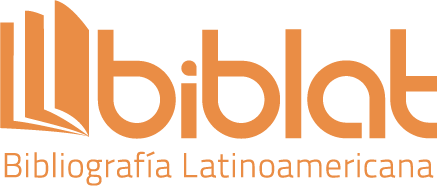

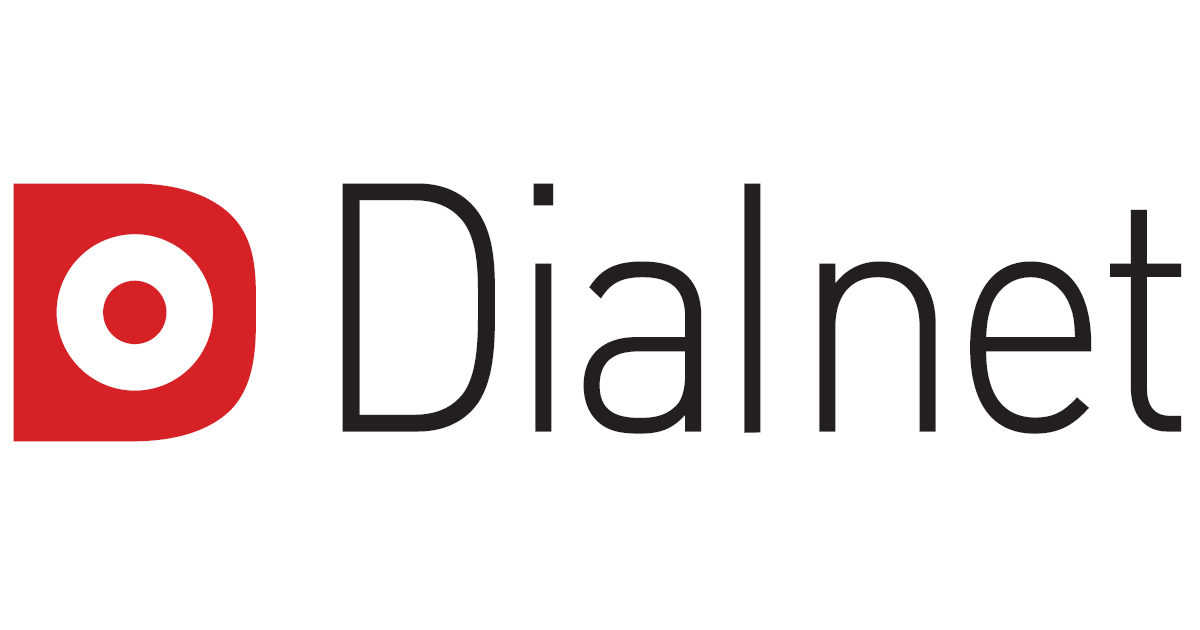

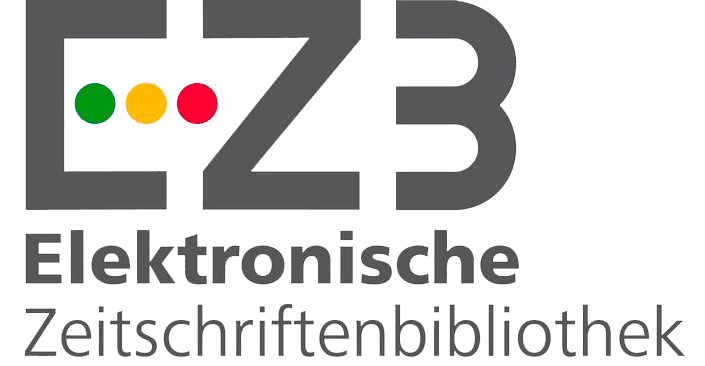


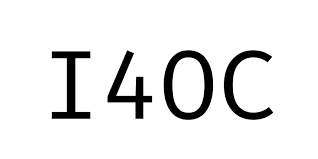
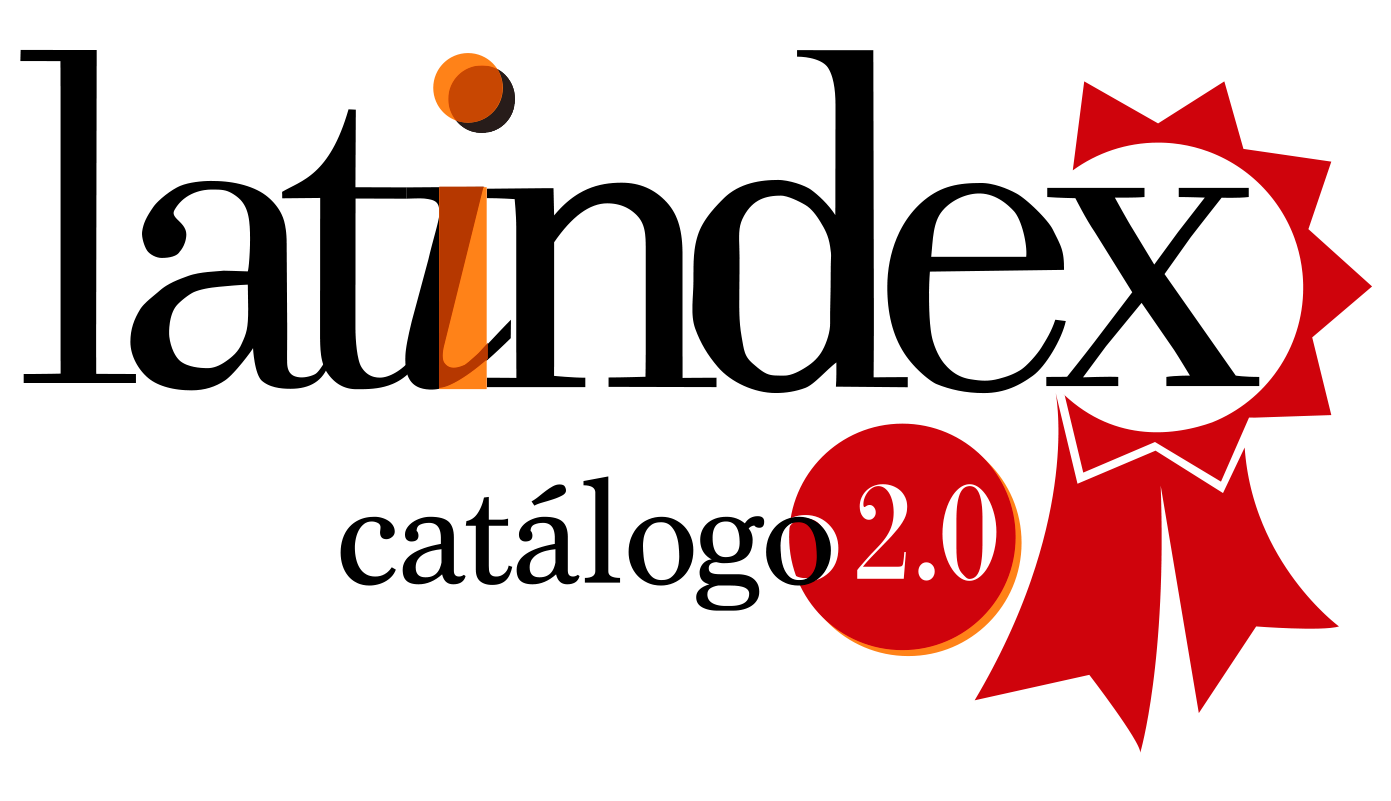

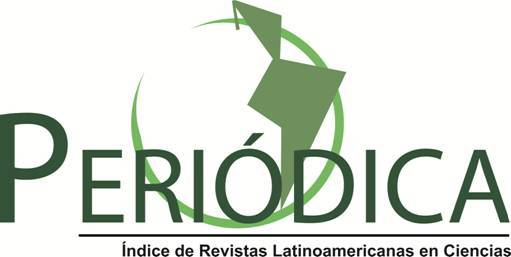

_(2).jpg)


